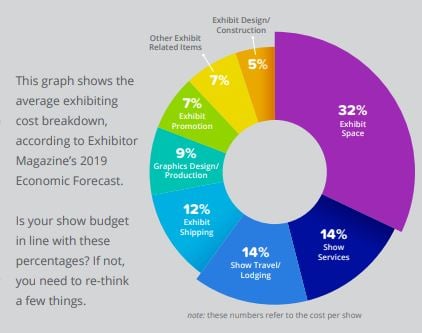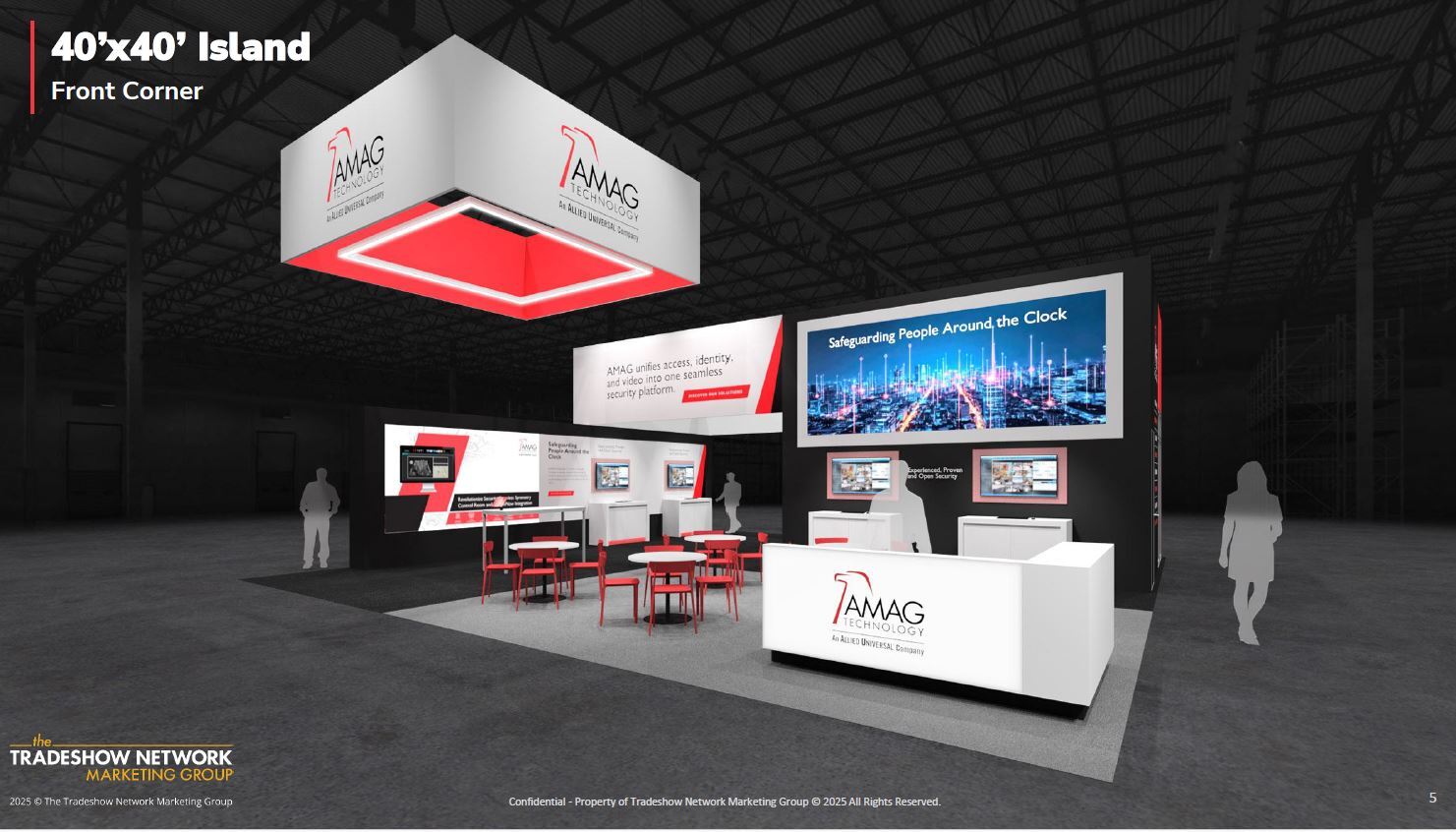You are starting the planning process for the year. Your company is doing well but wants to see a 5% growth in sales - especially since you are coming out with a new product at the end of this year. So you sit down and map out all the trade show events you will be participating in - sorting them by national and regional type shows along with who your target audience it. You are preparing this spreadsheet so that when your boss asks you what you need to be effective with driving sales for your company - you can easily show him your road map to success. But what if he or she comes back with - “that is an awesome plan, but we need to trim it down a bit” - what do you do? Optimizing your trade show budget can be a tricky thing - especially with everything going up in cost every year. Here are some ideas to help you maximize your efforts:
Determine your overall marketing budget.
As today’s savvy businesspeople know, to have a strong business people have to know who you are and what you offer. You need good marketing. The first step is a marketing budget to help you figure out practical steps to achieve those goals. But, how much should you spend?
As today’s savvy businesspeople know, to have a strong business people have to know who you are and what you offer. In other words, you need good marketing. While a marketing plan will give your business marketing goals, a marketing budget helps you figure out practical steps to achieve those goals. How much should you spend? And where should you spend it? What goes in a marketing budget?
A marketing budget typically covers costs for advertising, promotion and public relations. Each amount varies based on the size of the business, its annual sales and how much the competition is advertising. Depending on the industry, marketing budgets can range from as low as 1% of sales to over 30%. New companies may spend as much as 50% of sales for introductory marketing programs in the first year. Smaller business may just try to match the spending of their direct competitors.
The overall marketing budget should include:
- Print, digital, and broadcast advertising
- Design and printing costs for all print materials, such as newsletters, brochures and press releases, direct mail costs
- Web site development
- Public relations
- Trade shows
- Any other special events needed
Determine a dollar amount for each of the above categories. Keep in mind, it is usually easier to begin with a base amount for the entire marketing budget, and then divide it into subcategories. Although each business’s marketing budget will differ, the following are four common methods used to allocate funds.
Percentage-of-Sales
Allocating a specified percentage of sales revenue is one of the most popular methods for developing a marketing budget. The average allocation usually ranges between 9-12% of the annual budget, while the smallest businesses may go as low as 2%. If a business is launching a new product or service, advertising and publicity needs are greater, so the percentage will increase. The main advantage to using a percentage of sales is that the marketing budget will increase, or decrease, with the sales revenue of the company. The marketing budget will never spin out of control and deplete sales revenue.
The Dollar Approach
Many businesses simply set a flat dollar amount for their marketing budget. Particularly useful for small businesses, they can base marketing budgets on what they think the company can afford instead of the company’s sales. Picking a flat rate is usually effective for companies looking at a one-time expense, such as specific public relations marketing or a trade show, and not a long range marketing plan.
Defining a flat dollar amount may be challenging in the first year of a business, since there are no past records of sales and marketing expenditures. Many first-time business owners contact others in the field to inquire about their sales and marketing projections, and from there, estimate marketing costs.
Matching Competitors
Another method to create a marketing budget is to analyze and estimate what the competition is spending and copy them. This is another simple way to set a budget, since maintaining costs comparable with competitors keeps the business in line with others in the field. However, this method also assumes the competitors are spending the right amount and have a comparable business. If you’re a mom-and-pop organization competing with Walmart, obviously you couldn’t copy Walmart’s marketing budget. When using this method, the revenue of a competing business should be taken into account.
Marketing Plan Objectives
Often considered the most effective budgeting method, this method uses the objectives in the marketing plan to determine the marketing budget. The budget is developed by estimating the expenditures needed to achieve the desired marketing objectives. Although this method of budgeting is very realistic as to the needs of a company, it is often limited by available monies, as the desired budget may exceed the monies set aside for a given year. Nevertheless, many believe this method is the most logical for determining a marketing budget.
Whichever approach is taken, a formal budget will help define the marketing needs of any company. Establish a detailed marketing budget prior to the start of each fiscal year, and annually make any changes to parallel the growth or decline of the company. Monitor marketing costs and results throughout the year to better determine the effectiveness of your budget. Manage your marketing well and you just might find yourself in the enviable position of figuring out how to manage high revenues.
Dive specifically into your overall trade show marketing budget.
A typical rule of thumb is to take the cost of your exhibit space at the show and multiple that by three for a ballpark estimate. So if your space costs $25,000 to rent – your trade show marketing budget for this show will be around $75,000. But this is just an estimate – the bigger analysis comes once you have completed a show and you go back and do the analysis.
Understand all the costs and benefits of EACH trade show event you are participating in and prioritize them. So pull out those old notes and review the costs and benefits of the show the year before. Ask yourself what trends that show is giving you - are more of your ideal prospects attending - or less?
Analyze the costs of having a booth.
Figure out the booth space costs verses the number of attendees and your potential return in sales on your investment. An overall rule of thumb is that your booth space will be about 1/3 of the total cost of the show. Make sure to take into account all the costs from the space, the booth itself, drayage, shipping, setup, not to mention the people and their time. Ask yourself how you can minimize some of these costs - fewer people manning the booth, a newer lighter weight booth to reduce your drayage and shipping costs, and/or just add new graphics to an existing booth?
This graph shows the average exhibiting cost breakdown, according to Exhibitor Magazine’s 2019 Economic Forecast.
Is your show budget in line with these percentages? If not, you need to re-think a few things.
Understand any potential hidden costs.
Understand all your hidden costs in a trade show event and make them work to your advantage. There are a ton of little “tricks of the trade” that can save you hundreds of dollars at your events. Most of them deal with the shipping/setup and freight. For each show you attend you should download and read and highlight your show manual. Each show is different in the “rules” by which they operate - it is up to you to understand those rules.
Some simple things you can do to minimize your costs are to:
- Ship to advance warehouse (which means that 30 days prior you need your booth graphics done so that the booth can ship out)
- Put products/supplies in with your booth to decrease the number of things having to ship to the show location
- Take out things not needed - if you don’t need 3 counters for
this show then don’t ship it - Make your freight as lightweight as you can
(fabric graphics help with this) - Minimize your material handing (drayage fees). This is calculator can help you figure out your drayage costs, play around with the numbers, you will be surprised at the difference in costs between advanced warehouse and direct - crazy!
Determine your ROI on the show.
Determine your return on investment (ROI). The ROI is calculated by taking the sales revenue generated from trade show leads and dividing it by your cost of exhibiting at that show. Sometimes this is a hard calculation to do. There are many ways to help your company grow their business by 5% if that is your directive. ROI is the easiest to show results to your corporate team - but if your objective of the show is NOT to generate leads per say - it makes it harder. Other goals that you can have at a trade show event include:
- Creating awareness,
- Enhance existing relationships,
- Announce a new product coming out, or even
- To learn more about your competition.
These goals you cannot put a price tag on and therefore make your ROI calculations much harder. My advice to you on this is to incorporate some hard facts along with some ROI information, like “Ted met with our best customer XYZ who increase their sales during the year by 10%”.
Conclusion
It is clear that attendees to trade shows are serious about purchasing and solidifying vendor relationships. The key to success is matching your business objectives to your target market and show selections, while maximizing your budget.
Trade show are here to stay – they are an effective tool in driving sales and achieving your marketing goals. Make sure you are getting your fair share of this pie and that you are optimizing your overall budget effectively.






